Wheels of Fire was Cream’s third album. Issued in the US in June 1968 and in the UK two months later, it was a double LP. One record was of live recordings, the other of studio material. Of the nine tracks on the latter, three were co-written by the band’s drummer Ginger Baker – who wrote the lyrics – and British jazz pianist/composer Mike Taylor.
This was the closest Taylor got to the mainstream. The tracks recorded by Cream – "Passing the Time," "Pressed Rat and Warthog" and "Those Were the Days" – also appeared as the B-sides of singles. In the UK and the US, “Pressed Rat and Warthog” was the flip of “Anyone For Tennis (The Savage Seven Theme)” and “Those Were the Days” was on the other side of “White Room.” In the US only, “Passing the Time” backed “Crossroads.”
 All major stuff. Cream were huge. Their records instantly found a mass audience. The potential income from songwriting royalties was substantial. The UK single of “White Room” was released in January 1969. In the US, the “Crossroads” 45 came out the same month. It is unlikely Taylor was paying attention to such matters at the time. He died in the second half of January 1969. His gravestone gives the date as 19 January, the Sunday his body was found alongside Leigh Creek near Southend. He had, a local newspaper said, been in the water for under ten hours. It took time to identify him. His funeral was held on 7 February. The two new singles bearing Taylor’s name as a songwriter were an awful, accidental, epitaph. He was born Ronald Michael Taylor on 1 June 1938.
All major stuff. Cream were huge. Their records instantly found a mass audience. The potential income from songwriting royalties was substantial. The UK single of “White Room” was released in January 1969. In the US, the “Crossroads” 45 came out the same month. It is unlikely Taylor was paying attention to such matters at the time. He died in the second half of January 1969. His gravestone gives the date as 19 January, the Sunday his body was found alongside Leigh Creek near Southend. He had, a local newspaper said, been in the water for under ten hours. It took time to identify him. His funeral was held on 7 February. The two new singles bearing Taylor’s name as a songwriter were an awful, accidental, epitaph. He was born Ronald Michael Taylor on 1 June 1938.
With his name to the fore as the main credit, Mike Taylor released only two albums: Pendulum (issued in May 1966, recorded in October 1965) and Trio (issued in June 1967, recorded in July 1966). Each was positively reviewed in the general music press and specialist jazz magazines. Neither was a strong seller. Both were recorded at Denis Preston’s independent Lansdowne Studio and released by EMI’s Columbia imprint. Pendulum and Trio are newly reissued on vinyl.
Mike Taylor first attracted attention in UK jazz circles around 1962. Self-taught, he had been playing piano since the late Fifties. He was swiftly integrated into London’s modern jazz scene and was familiar to, and played with, figures like future Cream members Jack Bruce and Ginger Baker, as well as Graham Bond, Dave Gelly, Jon Hiseman, Tony Reeves and more. On Pendulum, issued as by the Mike Taylor Quartet, Hiseman contributes drums and Reeves plays bass. For Trio – with its scrotal, unpleasant Denis Preston sleeve image and MIke Taylor Trio credit – Taylor’s regular bassist and collaborator Ron Rubin was heard as well as Jack Bruce and, again, Hiseman.
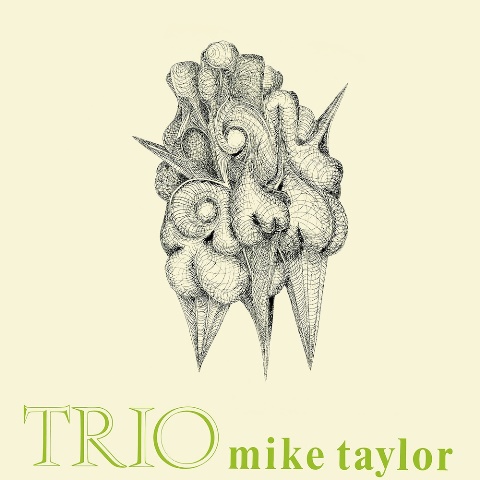 While Taylor was embedded in and central to the British jazz scene he – notwithstanding the subsequently accrued knowledge of his life and trajectory – seems peripheral. The two albums came out on a high profile label with good distribution. The reviews were supportive. He regularly played live. Despite what has been found out about him, his position remains murky, ill defined. Listening to the two albums suggests why. They are unusual.
While Taylor was embedded in and central to the British jazz scene he – notwithstanding the subsequently accrued knowledge of his life and trajectory – seems peripheral. The two albums came out on a high profile label with good distribution. The reviews were supportive. He regularly played live. Despite what has been found out about him, his position remains murky, ill defined. Listening to the two albums suggests why. They are unusual.
Side One of Pendulum includes versions of three standards: “But not for me,” “Exactly Like You” and “A Night in Tunisia.” Side Two features three of Taylor’s compositions: “Pendulum,” “To Segovia” and “Leeway.” The tracks which ought to be familiar are, in these arrangements, rewritten so much they may as well be self-composed. Taylor’s piano appears to be mathematically structured with, at times, a slight undertone edging towards Bossa Nova territory. What’s disconcerting is the lack of repetition of phrases, a constant roaming through a restricted scale and short sections of rhythmic punctuation on the keyboard. Melody and a linear through-line (following such, or returning to such) do not seem to be the point. On Taylor’s own material, beyond the drums, structure is provided by collating back-to-back rhythm-based sections; each of which is different from the other. It’s like free jazz, were it not improvised.
Trio's track sequencing intersperses Taylor's compositions with material from other writers. Despite there being three players rather than four, this eight-track album is largely stylistically along the lines of Pendulum. However, when things get pacific, balance is set awry by pushing the sectional approach taken on Pendulum further. Taylor’s playing is more flowing, but as a theme seems to bed in – it’s off somewhere else. Side Two’s “Guru” is most odd: although minimal, its frequent descents into churn seem to grapple with evoking emotional turbulence.
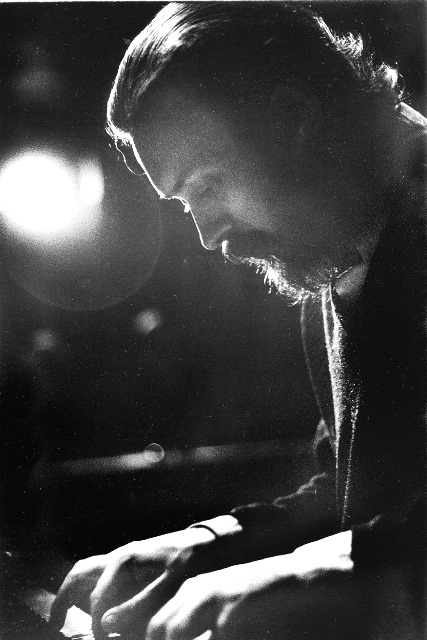 If approached in a vacuum, both albums come across as impossible to place. Thankfully, there is help. The author and music historian Richard Morton Jack has gone into the story. His research helps provide a framework for Taylor’s music. Jack has noted that Taylor was initially inspired by The Horace Silver Quintet and Art Blakey’s Jazz Messengers. A review Jack found of an August 1965 live appearance by Taylor’s Quartet mentions the band working “in the Coltrane manner.” A 1966 review of Pendulum also namechecks Coltrane, notes an Eastern influence and that of that of saxophonist Steve Lacy. Of the Trio album, Gramophone observed that “Taylor’s style is free, flowing and graceful, a compound of elements to be found in the work of men such as Lennie Tristano and Bill Evans. But he makes greater use of his accompanists than either.” (pictured right, Mike Taylor at Ronnie Scott's, 27 October 1967. © Jak Kilby Trust)
If approached in a vacuum, both albums come across as impossible to place. Thankfully, there is help. The author and music historian Richard Morton Jack has gone into the story. His research helps provide a framework for Taylor’s music. Jack has noted that Taylor was initially inspired by The Horace Silver Quintet and Art Blakey’s Jazz Messengers. A review Jack found of an August 1965 live appearance by Taylor’s Quartet mentions the band working “in the Coltrane manner.” A 1966 review of Pendulum also namechecks Coltrane, notes an Eastern influence and that of that of saxophonist Steve Lacy. Of the Trio album, Gramophone observed that “Taylor’s style is free, flowing and graceful, a compound of elements to be found in the work of men such as Lennie Tristano and Bill Evans. But he makes greater use of his accompanists than either.” (pictured right, Mike Taylor at Ronnie Scott's, 27 October 1967. © Jak Kilby Trust)
In 2010, Jack wrote that “by 1962 [Taylor had] started to develop ideas based on repetitive harmonic patterns underlying a score, which he called ‘pedals.’ With this in mind, he devised radical new arrangements of standards such as ‘But Not For me’ and ‘A Night in Tunisia’, both of which found their way onto Pendulum three years later. Though he lacked formal training, his constant experimentation ensured that his writing and arranging – as well as a natural gift for melody – developed rapidly. He cared deeply about Europe’s musical heritage, and was driven by the idea that it could be married to American jazz and R&B to create a modern European sound.”
 The Trunk label had also looked into Taylor. For the imprint, in 2007, Dave Gelly wrote that Taylor’s music was “certainly unconventional, and quite puzzling at times, but it was sharp-edged, intricate and very precise. There could certainly be no doubt that a huge amount of detailed work and thought had gone into making it exactly the way it was.” Jon Hiseman told Gelly that “the main thing that interested him [Taylor] was the idea of pulse without bar-lines, giving the music forward movement and shape without reference to any external structure, such as time signatures or choruses.”
The Trunk label had also looked into Taylor. For the imprint, in 2007, Dave Gelly wrote that Taylor’s music was “certainly unconventional, and quite puzzling at times, but it was sharp-edged, intricate and very precise. There could certainly be no doubt that a huge amount of detailed work and thought had gone into making it exactly the way it was.” Jon Hiseman told Gelly that “the main thing that interested him [Taylor] was the idea of pulse without bar-lines, giving the music forward movement and shape without reference to any external structure, such as time signatures or choruses.”
A few years on, Hiseman told Jack that “Mike recognised clearly that a lot of his contemporaries were simply mimicking the greats, especially the Americans. He knew that he was different. I never heard him play a conventional piece of music on the piano, and don’t even know if he knew how to. Instead, he’d reduce standards to a few notes, then improvise around them. He was interested in extending chords as far as he possibly could, not playing tunes at parties. He had no interest in form.”
No wonder the idiosyncratic Pendulum and Trio occupy their own space. Increasingly, Taylor was too.
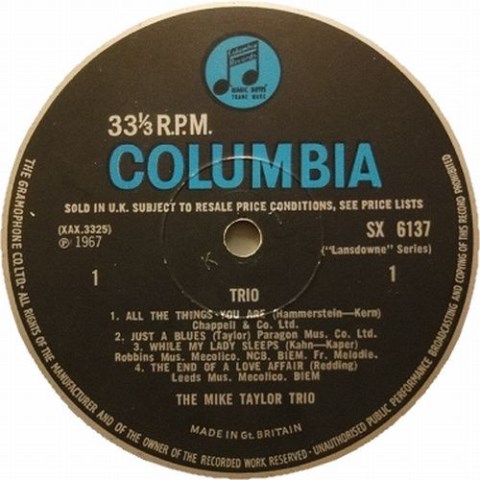 As well as the work by Richard Morton Jack and the Trunk label, there is also the 2015 Luca Ferrari book on Taylor Out of Nowhere. Together, these detail Taylor’s life. The essays coming with the new reissues pithily capture it. Seemingly, Taylor had been aware of psychedelics since at least 1962, was regularly taking LSD from 1965 along with ceaselessly smoking cannabis. “By 1966,” Ron Rubin told Jack, Taylor had “become absolutely bedraggled and incoherent.” There is a lot more – it can be read elsewhere. Then, in January 1969, he died. He was homeless. It will never be known whether Taylor took his own life or if his death was an accident.
As well as the work by Richard Morton Jack and the Trunk label, there is also the 2015 Luca Ferrari book on Taylor Out of Nowhere. Together, these detail Taylor’s life. The essays coming with the new reissues pithily capture it. Seemingly, Taylor had been aware of psychedelics since at least 1962, was regularly taking LSD from 1965 along with ceaselessly smoking cannabis. “By 1966,” Ron Rubin told Jack, Taylor had “become absolutely bedraggled and incoherent.” There is a lot more – it can be read elsewhere. Then, in January 1969, he died. He was homeless. It will never be known whether Taylor took his own life or if his death was an accident.
After his passing, Denis Preston produced what was to be titled The Mike Taylor Memorial Album in 1973. Most of its tracks were unheard and drew from surviving manuscripts of Taylor’s compositions. The album featured many figures from the UK’s modern jazz world. It wasn’t issued, and Trunk released it as Mike Taylor Remembered in 2007. In parallel, original pressings of Taylor’s album were fetching high prices. Over the past decade-and-a -half, Pendulum has sold for £700 to £1000. Trio goes for around £1400. There were reissues of each album (Universal issued Pendulum on CD in 2004; a CD of Trio arrived in 2007). As well as Trunk’s Memorial Album, there have been collections of Taylor’s material recorded by others and, in 2021, a weird, apparently Swiss, compilation. Mike Taylor has certainly been remembered.
These smart new reissues of Pendulum and Trio (both in their stereo iterations: the albums were originally issued in mono and stereo. Pictured above, the mono versions) sound very direct and dynamic, and are evidently mastered with care from the original tapes. The pressings are noiseless. As mentioned above, each comes with a contextualising/historic essay. Check them out. Although this is recognisably modern jazz, an incomparable vision of music is captured. Mike Taylor was, indeed, as Ron Rubin told Richard Morton Jack, “totally uncompromising.”
- Next week: The Pale Fountains – The Complete Virgin Years
- More reissue reviews on theartsdesk
- Kieron Tyler’s website

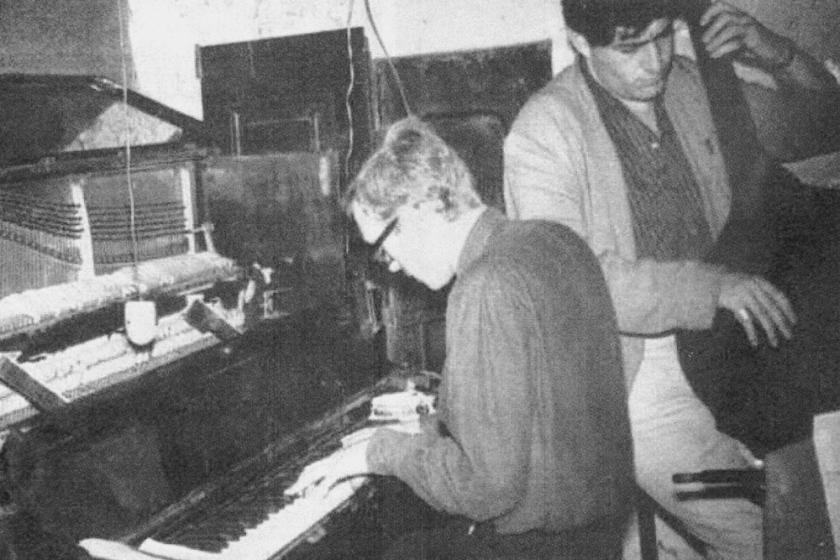



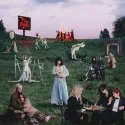






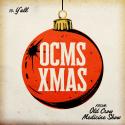


Add comment